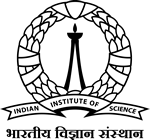Front Cover Acceptance
Name: Dr. Kusuma Jagadish
Name Of Award Or Achievement : Front Cover Art Acceptance
Date Of Award : December 27th , 2024
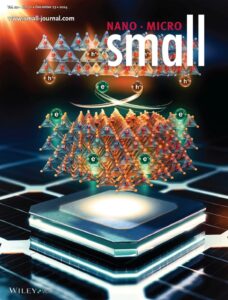
Details: Interface‐Centric Strategies In Kesterite Solar Cells: Addressing Challenges, Solutions, And Future Directions For Efficient Solar‐Harvesting Technologies In Small, Wiley. The Article Emphasizes On – The Crucial Role Of Interfaces In Kesterite Solar Cells, Delving Into Interfacial Structure, Carrier Loss Pathways, And Non-Radiative Recombination. It Highlights Recent Advancements In Interface Engineering And Sophisticated Characterization Techniques, Underscoring The Need To Address Interfacial Losses-Pivotal For Refining Charge Transport And Unlocking The Full Potential Of Next-Generation Energy Materials.
Name: Durgesh Rambhau Borkar
Name Of The Award Of Achievement: Front Cover Art Acceptance
Date : 20th May 2025
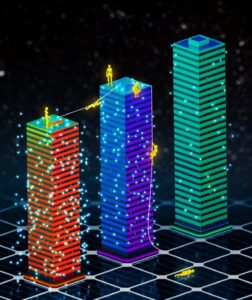
Details: Interface-Centric Strategies In Kesterite Solar Cells: Addressing Challenges, Solutions, And Future Directions For Efficient Solar-Harvesting Technologies, Small Methods, Wiley. This Work Represents Energy Landscapes And Charge Dynamics In Solar Absorbers, Illustrating The Role Of Interface Engineering In Optimizing Performance. The Composition Reflects The Intricate Balance Of Transitions And Interactions Within Structured Environments, Capturing The Essence Of Tailored Heterojunctions In Thin-Film Solar Cells
Name: Sangeetha C K
Name Of Award Or Achievement : Front Cover Art Acceptance
Date Of Award : November 28th , 2024

Details: In This Work We Have Synthesized Cus Of Different Cu Stoichiometry; Studied The Electronic Structure And Effect Of Trap States Near Valence Band Edge, In The Photophysical Properties Using Photoelectron And Optical Spectroscopy Techniques.
Name: Nilesh Saykar
Name Of Award Or Achievement: Front Cover Art Acceptance
Date Of Award: 2025
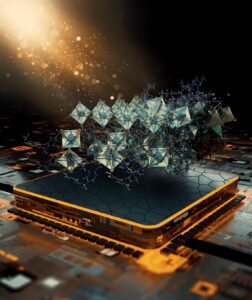
Details: This Cover Art Highlights The Critical Role Of Phase Distribution In Quasi-2D Dion-Jacobson Perovskites In Driving Ultrafast Charge Build-Up And Directional Charge Transfer. Through The Strategic Spatial Arrangement Of Various N Phases, Enhanced Charge Dynamics Are Achieved, With Narrow-Band Emission Dominating In Higher N Phases. Ultrafast Charge Transfer Between Consecutive Phases In Quasi-2D Thin Films Is Demonstrated, Accompanied By Anisotropic Charge Transport As Verified By Photocurrent Reduction. These Findings Pave The Way For Optimized Energy Transfer Mechanisms In Perovskite-Based Optoelectronic Devices.
Name: Sunil Suresh
Name Of Award Or Achievement: Front Cover Art Acceptance
Date Of Award: 8 March 2024

Details: In Article Number 2303309, Alexander R. Uhl And Co-Workers Develop A Novel Rear Contacting Structure For Solution-Processed Cuin(S,Se)2 (Cisse) Solar Cells To Reduce The Rear Surface Recombination Losses. An Atomic Layer Deposited Al2O3 Film Was Employed To Passivate The Mo/Cisse Rear Surface While Precipitates, Formed Via Chemical Bath Deposition, Of Cds Were Used To Generate Nanosized Point Openings.
Name: Shubha S Revanakar
Name Of Award Or Achievement: Front Cover Art Acceptance
Date Of Award: 2025
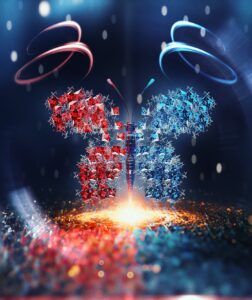
Details: The Cover Art Illustrates Chiral Perovskites’ Structural Asymmetry And Their Interaction With Circularly Polarized Light. A Butterfly Symbolizes Chirality, With Helical Rays Depicting Spin-Selective Optical Responses. The Extended Perovskite Lattice Base Highlights The Inorganic Framework Enabling Unique Photophysical Properties For Future Spintronic And Optoelectronic Applications.
Name: Saytam Jena
Name Of Award Or Achievement: Front Cover Art Acceptance
Date Of Award: 2025

Details: The Present Work Introduces A Novel Hybrid Organic-Inorganic 2D Perovskite, Where A Rational Molecular Design Strategy Enables Efficient Triplet Exciton Generation Through An Excited-State Charge Transfer (ESCT) Process. Upon Photoexcitation, A Sharp And Intense Emission Peak Having A Narrow Bandwidth Is Observed At ~ 400 Nm, Reflecting Excitonic Emission From The Perovskite Entity, Which Subsequently Undergoes Charge Transfer To The Energetically Aligned Triplet State Of The Organic Spacer Molecule. The Triplet State (T1) Of The Spacer Molecule Then Undergoes Radiative Intersystem Crossing (ISC) To The Ground State (S0), Resulting In Efficient Broad Phosphorescence Emission At ~ 560 Nm Having An Excited State Lifetime Of ~ 30 Milliseconds Under Ambient Atmosphere, Suggesting Excellent Moisture Stability Of The 2D Perovskite.
Name: Shambhavi Joshi
Name Of Award Or Achievement: Front Cover Art Acceptance
Date Of Award: 2025

Details: Lead-Copper Alloyed 2D Perovskites Undergo Intriguing Structural Phase Transitions At Low Temperatures, Where Distinct Phases Seamlessly Merge. This Behavior Closely Resembles That Of Traditional Lead-Based Perovskites, Yet With A Significantly Reduced Lead Content, Offering A More Sustainable And Environmentally Friendly Alternative.
Name: Hritwik Ghosh
Name Of Award Or Achievement: Front Cover Art Acceptance
Date Of Award: 2025

Details: Cspbx₃ Perovskite Semiconductors Have Been Extensively Studied For Their Diverse Optoelectronic Applications And Remarkable Morphology-Dependent Luminescence Properties. In This Study, Steady-State And Time-Resolved Photoluminescence (PL) Spectroscopy Are Employed To Investigate The Emission Properties, Defect States, And Recombination Mechanisms Of Cspbbr₃ Across Precisely Engineered Morphologies Like Quantum Dots (Qds), Nanosheets (Nss), And Nanowires (Nwrs) Within A Temperature Range Of 80K To 300 K. The Findings Reveal That Exciton Binding Energy, Derived From PL Intensity, Is Strongly Influenced By Quantum Confinement And Varies With Dimensionality, With Qds Exhibiting The Highest Binding Energy.
Name: Mohan Ram
Name Of Award Or Achievement: Front Cover Art Acceptance
Date Of Award: 2025

Details: To Unlock The Full Potential Of Supercapacitor, It Is Essential To Explore Novel Material With Tuneable Electrochemical Properties. Transition Metal Chalcogenides In Particular Copper Chalcogenides Shown Its Immense Potential To Achieve A Next Generation Electrode Material. This Review Aims To Explore Copper-Based Chalcogenides As Promising Candidate, Highlighting Their Rich Redox Activity, High Intrinsic Conductivity, And Structural Tunability. We Also Discuss About How Variations In Morphology, Doping Effect, And The Formation Of Composites Significantly Influence Electrochemical Performance. The Hybridisation Of Other Metallic Elements Into Binary Copper Chalcogenides Is Addressed As Well, Extending The Scope To Ternary And Quaternary Copper Chalcogenides, Which Offer Enhanced Conductivity, Stability, And Redox Activity.
